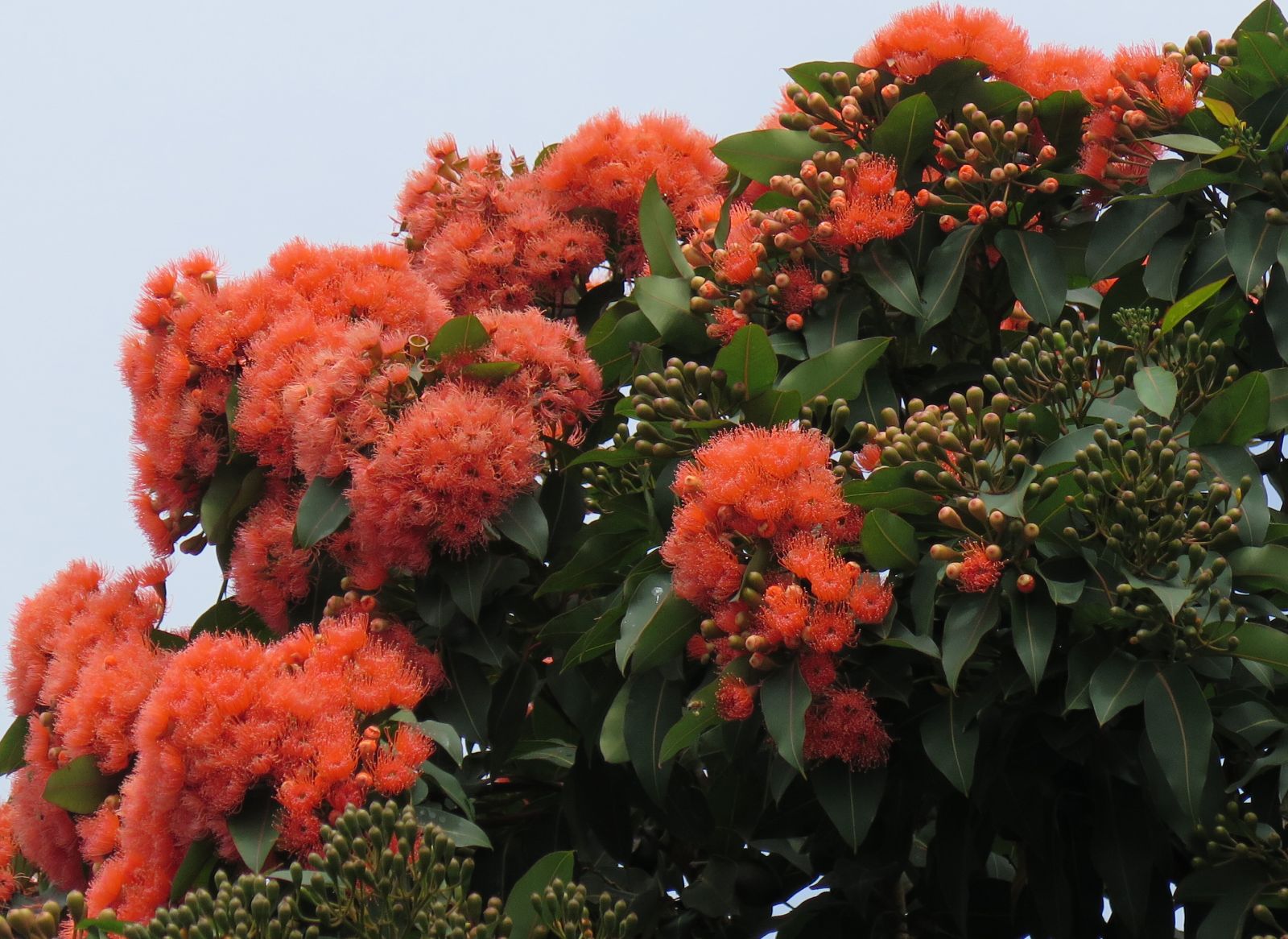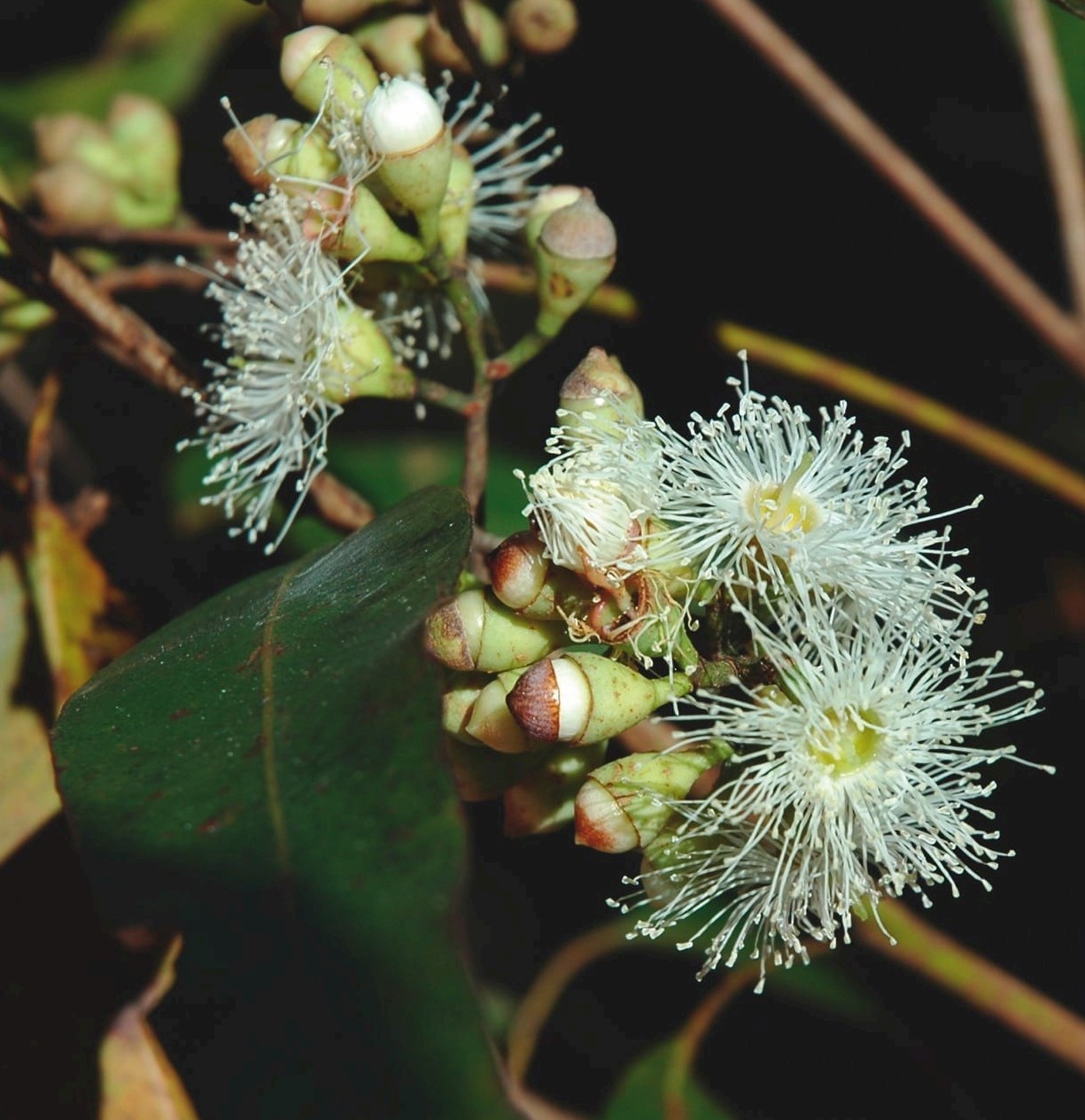Corymbia
Credits
Article from New Trees by John Grimshaw & Ross Bayton
Recommended citation
'Corymbia' from the website Trees and Shrubs Online (treesandshrubsonline.
Family
- Myrtaceae
Common Names
- Bloodwoods
- Ghost Gums
- Spotted Gums
Corymbia comprises about 115 species, all but five of which are endemic to Australia, occurring in all states except Tasmania. The genus was split from Eucalyptus relatively recently (Hill & Johnson 1995); while not all eucalypt enthusiasts accept this subdivision of the genus (and further splits have been proposed), the prevailing opinion seems to be to recognise three genera: Angophora, Corymbia and Eucalyptus. Corymbia species are trees (rarely mallees) with persistent or shedding bark. The leaves are typically dimorphic: juvenile leaves are opposite, adult leaves alternate with closely spaced lateral veins and oil glands. Inflorescences are terminal or lateral, often extensively branched, and composed of numerous seven-flowered (rarely three-flowered) umbellasters. The flowers are hermaphrodite, 4– or 5-merous, and have a cup-shaped hypanthium; the sepals are fused into a calyptra; the petals are free, but fused to the calyptra, or fused together forming an inner calyptra. The fruit is a woody capsule with valves included (Hill 2002c). There is no single character that distinguishes Corymbia from Eucalyptus; in Corymbia the bark splits in small polygonal scales, and the inflorescences are compound and terminal, comprising regular umbellasters, which are conspicuous on the outside of the crown.
As a largely tropical genus Corymbia is little known in temperate gardens. The Red-flowering Gum C. ficifolia is commonly grown in the milder parts of the temperate world, and is a favourite in the San Francisco Bay Area, but it cannot tolerate frost. Allen Coombes (pers. comm. 2008) was informed by Sir Harold Hillier that it was once planted along the seafront in Bournemouth, Dorset, but that the trees died in the winter of 1947. There is a 9 m specimen at Tresco Abbey in the Isles of Scilly (Johnson 2007), and bold planters in the mildest extremities of our area may care to try it.
The related genus Angophora is apparently not in temperate cultivation. Tom Hudson (pers. comm. 2006) has tried and lost A. hispida (Sm.) Blaxell at Tregrehan.


